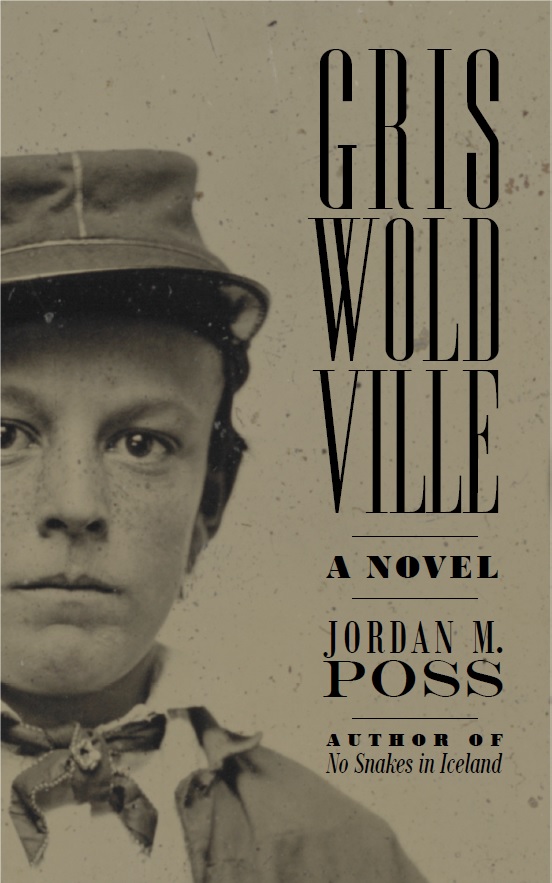A Handful of Dust
/My trip through the works of Evelyn Waugh continues with A Handful of Dust, one of Waugh's most autobiographical and hard-edged works. Sharp readers may intuit spoilers in the review below. It shouldn't really harm the reading experience, but be forewarned.
The man who loved Hetton
A Handful of Dust tells the story of Tony and Brenda last, an aristocratic couple living a quiet and apparently contented life with their son John Andrew in Tony's ancestral family home, Hetton. Hetton is an unfashionable Victorian gothic mansion that Brenda cordially dislikes. Tony adores it. It's not just his home, it's his family's home, the seat of the family legacy, and the symbol of his responsibilities as a family man and aristocrat.
Tony and Brenda cross paths with John Beaver, a shallow cipher of a man who bums his way from one party and country house to another, living off of wealthy friends. He's everyone's second choice for filling seating arrangements. This is simply unthinking parasitism—he's too full of nothing to be malicious. When Beaver shows up at Hetton mostly uninvited, Tony, a quiet man who dislikes intruders and prefers his routines, fobs him off on Brenda, who is a more skilled entertainer.
Beaver makes an impression on Brenda, not for any strengths or attractive qualities, but for his very emptiness and pliability. She begins an affair with him, absconding to London more and more often under the guise of studying economics. Brenda, perhaps owing to a guilty conscience, even tries to lure Tony into his own affair with a succession of vacuous and self-absorbed acquaintances. Tony, oblivious, and loyal to Brenda to the end, ignores them all.
The crisis comes when, with Brenda skipping out on an actual opportunity to entertain guests at Hetton, Tony and Brenda's son John Andrew has a terrible accident. When a friend tracks down Brenda and tells her that something has happened to "John," she misunderstands at first and, when she realizes it's her son John and not her lover John, she blurts out, "Thank God." Then she breaks down weeping.
After this Brenda seeks a divorce, and Tony is stunned not only at the tragedy that has befallen the family, but at his wife's betrayal. He nevertheless—because he has "contract[ed] the habit of loving and trusting Brenda"—agrees to grant her grounds for a divorce, which leads to a series of comically inept attempts to stage an infidelity involving hired detectives and a good-time girl with an annoying daughter.
Finally, Tony, fed up, drops the divorce suit, refuses to cooperate with Brenda's efforts to secure alimony, and joins up with an explorer setting out to find a lost city in the Amazon. The ending—with Tony hopelessly trapped in the jungle, Brenda remarried to one of Tony's only friends, and Hetton in the hands of distant cousins—is a shock.
The savages at home
Those in the know place A Handful of Dust at a crucial joint in Waugh's body of work, a transition from straightforwardly farcical satires of university and boarding school life, imperialism, or the "bright young things" of fashionable London, to the more reflective and sharper Catholic novels of his maturity.
Waugh's first wife—also named Evelyn—divorced him after having an affair, and Waugh, as oblivious as Tony, was devastated. He obviously drew on these experiences in constructing the story, which was an expansion on a previous short story, "The Man Who Loved Dickens," about an eccentric illiterate who lived deep in the Amazon basin and loved nothing more than to have Dickens read to him for two hours daily by a hapless prisoner. "After the short story was written and published," Waugh wrote later, "the idea kept working in my mind. I wanted to discover how the prisoner got there, and eventually the thing grew into a study of other sorts of savage at home and the civilized man’s helpless plight among them."
A Handful of Dust is a more difficult read than the other books I've read so far. Not because of its style or technique—it's as effortlessly elegant as any of the others—but because its protagonist, the "civilized man" Tony, faces a conga line of tragedies and betrayals at the hands of merciless savages and his virtue goes unrewarded. As Roger Ebert wrote in his review of the film:
there are passages where we cannot quite believe how monstrously the characters are behaving. We Americans like to see evil in terms of guns and crime and terrorists and drug smuggling—big, broad immoral activities. We rarely [tell stories] about how one person can be personally cruel to another, through their deep understanding of what might hurt the other person the most.
It's a hard read, but a powerful indictment of shallow society and the destructive selfishness of modern people. I recommend it highly.
More if you're interested
Charles Sturridge directed a film adaptation of A Handful of Dust, which was released in 1988. It stars James Wilby and Kristin Scott Thomas (Clemmie Churchill in Darkest Hour) as Tony and Brenda, with Rupert Graves (Lestrade to Benedict Cumberbatch's Sherlock Holmes) as John Beaver, and Judi Dench, Anjelica Huston, Stephen Fry, and Alec Guinness in supporting roles. I found a copy at our local library and plan to watch it this weekend.
Here's novelist Joseph Kanon discussing the book with the Wall Street Journal Book Club.






















